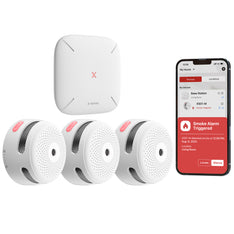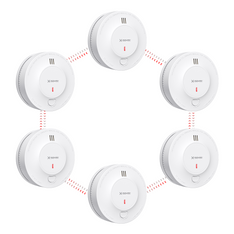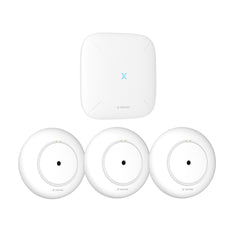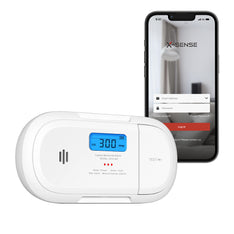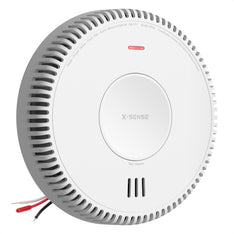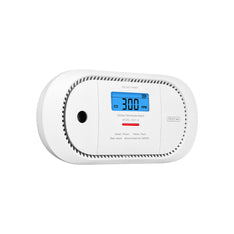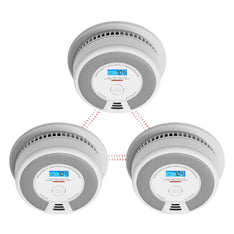Things to Know About Carbon Monoxide Alarms
Wed, Apr 15, 2020
The presence of Carbon Monoxide is a threat to us in our homes and businesses. This build-up of this invisible and odorless matter will not only impact our health. It can also lead to more disastrous events.
Nowadays, there are specialized technologies that are built to detect these gas elements. There are Carbon Monoxide Alarms available in the market which can serve us great purpose.
If you are one of those that has the questions, "What Does a Carbon Monoxide Detector Do and How Does it Work?"" – then you are in the right place. Below, we tackle what they are and how it can prevent the possibility of gas poisoning and combustion.
1. What is Carbon Monoxide?
Carbon Monoxide is a chemical element that is represented as (CO). It is a gas particle that is invisible to the naked eye. This is an odorless gas that can cause body poisoning when it has been inhaled. Carbon Monoxide is present when fossil fuels burn such as wood, coal, propane, charcoal, natural gas, oil gasoline, and kerosene.
With its incombustible characteristics, being in the presence of this matter is dangerous. The gas penetrates your body and limits your blood cells to circulate oxygen around. If Carbon Monoxide is present, a simple spark would easily trigger a blazing fire.
2. What is Carbon Monoxide Poisoning Symptoms and Where does it Come From?

If we take a look at around our house, carbon monoxide is present in most situations. It is present when we cook our food over a gas stove when we put our wet clothes in the dryer when we burn wood in our fireplace when we go to our garage to check our vehicle fuel gauge and many more. These things that we use in our daily lives use Carbon Monoxide that is good for doing tasks but can also be harmful when neglected.
Carbon Monoxide poisoning can occur when such appliances or units are not well observed and maintained. Examples are malfunctioning appliances where carbon monoxide could seep through its cracks, a clogged chimney that contains the gas in the house, and even a vehicle left running while parked in a garage could start the gas build-up. We need to be aware that these things need to be taken seriously because it poses a severe threat for anyone in the vicinity.
Typical symptoms of Carbon Monoxide poisoning are flu which can involve headaches, vomiting, dizziness, drowsiness, fatigue, and confusion. When these symptoms arise, we advise that you immediately go out of the house and seek breathable air. Open your house for ventilation.
3. How Does Carbon Monoxide Detectors Work?
Carbon Monoxide Alarms are built to detect the presence of CO threat. It works similarly as any smoke detector which triggers an alarm as soon as smoke is present in the area. In this case, it sets an alarm when CO is detected.
There are different types of carbon monoxide alarms which have slightly vary in methods to detect CO presence. However, they are all built with a specialized sensor to detect the gas and sound the alarm as necessary as can be.
4. Where Should I Place a Carbon Monoxide Detector?
As a safety preference, carbon monoxide alarms are necessary for homes, which include spaces that we do not usually occupy such as the basement or even the attic. If a gas chamber is present in the area, you may want to put a unit there.
This also goes for businesses to prevent unnecessary catastrophic events. There are government rules that may also need to be revisited based on your location. Some laws may require you to install a detector at certain places such as near every bedroom.
5. What to Do if Carbon Monoxide Detector Goes Off?
First and foremost, if your carbon monoxide alarm is triggered, do not panic at all. Panic will just cause disorientation and illogical decisions. The next thing to do is to immediately secure everyone in one place and herd them outside for fresh air. Check up on everyone’s breathing and health condition.
If they present some symptoms that could lead to carbon monoxide poisoning, then immediately rush them to the hospital or call an ambulance.
In the case where your house setup bricked, you can open the doors and windows for more ventilation so that the carbon monoxide does not build up. However, it is still advisable to go out of the house as soon as possible and contact your local police who can handle and investigate the gas leak better.
6. How to Choose a Carbon Monoxide Alarm?
It is always best to rely on a serious brand when it comes to safety. X-Sense is one of the market-leading home safety brands that provide products for smoke detectors, carbon monoxide detectors, and other alarm combinations. The brand is highly regarded for a simple reason. Their devices are certified, reliable and effective when it comes to safety and damage prevention.
X-Sense is a trusted brand that owns over 60 patents under its belt. In terms of coverage, they have also sold over 10 million devices across more than 48 countries. This goes to show the level of dependability that most consumers have on the brand and their technologies. With their continuous innovation, you can only expect nothing less of the brand’s commitment to improving.
7. How to Prevent Carbon Monoxide Poisoning?
With some simple steps, you can prevent the risk of carbon monoxide poisoning.
Avoid Gas Stoves Inside the House
Your gas range appliances should be placed outside of your home so that proper ventilation could occur. It should never be placed inside the house where carbon monoxide can build-up.
Bring out your Car
If you want to warm up your car, never do it inside the garage. Place the vehicle outside or open the doors of your garage when doing this. Carbon monoxide is directly pumped out through your car’s exhaust.
Invest in a Carbon Monoxide Detector
For preventive measures, it is always good to own a carbon monoxide detector.
